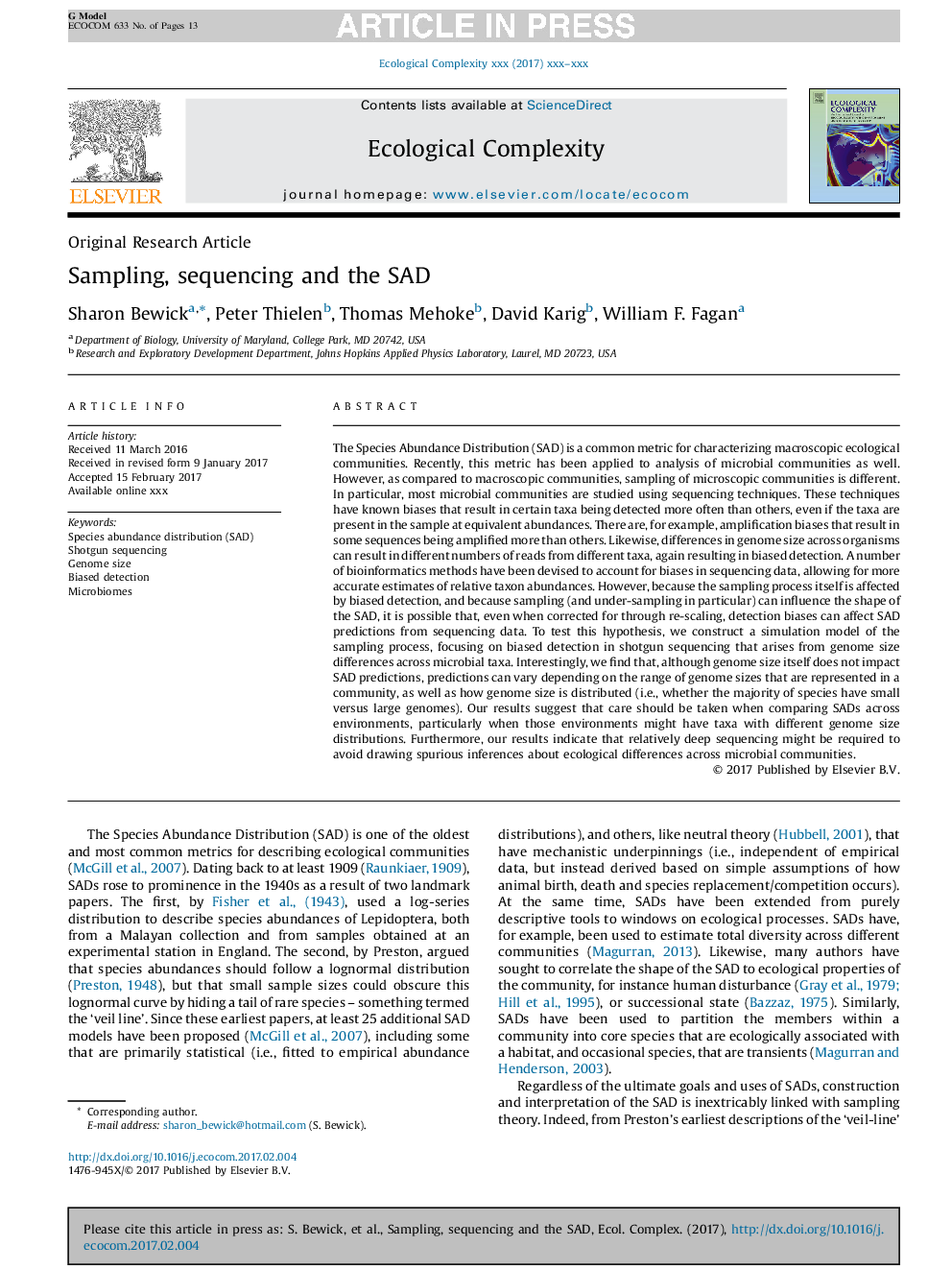| Article ID | Journal | Published Year | Pages | File Type |
|---|---|---|---|---|
| 8844859 | Ecological Complexity | 2017 | 13 Pages |
Abstract
The Species Abundance Distribution (SAD) is a common metric for characterizing macroscopic ecological communities. Recently, this metric has been applied to analysis of microbial communities as well. However, as compared to macroscopic communities, sampling of microscopic communities is different. In particular, most microbial communities are studied using sequencing techniques. These techniques have known biases that result in certain taxa being detected more often than others, even if the taxa are present in the sample at equivalent abundances. There are, for example, amplification biases that result in some sequences being amplified more than others. Likewise, differences in genome size across organisms can result in different numbers of reads from different taxa, again resulting in biased detection. A number of bioinformatics methods have been devised to account for biases in sequencing data, allowing for more accurate estimates of relative taxon abundances. However, because the sampling process itself is affected by biased detection, and because sampling (and under-sampling in particular) can influence the shape of the SAD, it is possible that, even when corrected for through re-scaling, detection biases can affect SAD predictions from sequencing data. To test this hypothesis, we construct a simulation model of the sampling process, focusing on biased detection in shotgun sequencing that arises from genome size differences across microbial taxa. Interestingly, we find that, although genome size itself does not impact SAD predictions, predictions can vary depending on the range of genome sizes that are represented in a community, as well as how genome size is distributed (i.e., whether the majority of species have small versus large genomes). Our results suggest that care should be taken when comparing SADs across environments, particularly when those environments might have taxa with different genome size distributions. Furthermore, our results indicate that relatively deep sequencing might be required to avoid drawing spurious inferences about ecological differences across microbial communities.
Keywords
Related Topics
Life Sciences
Agricultural and Biological Sciences
Ecology, Evolution, Behavior and Systematics
Authors
Sharon Bewick, Peter Thielen, Thomas Mehoke, David Karig, William F. Fagan,
